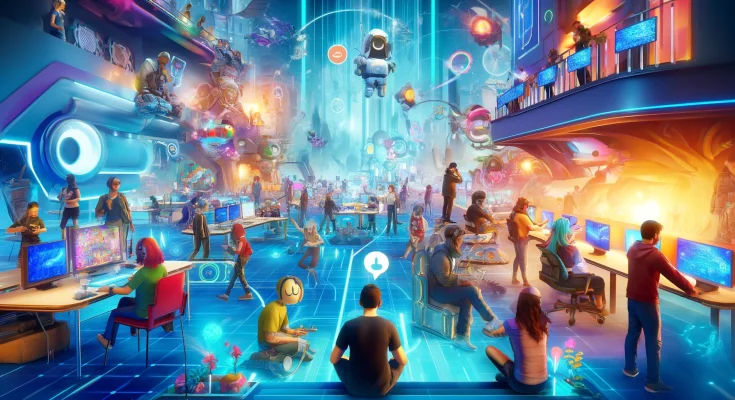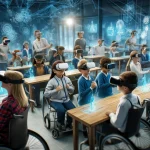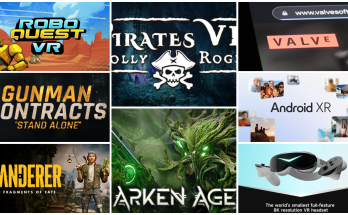Virtual reality (VR) is no longer just a way to escape into digital worlds alone; it’s become a vibrant hub for social interaction. With advancements in VR technology, games are now crafted not just for play but also for connection, transforming how we experience social interactions in a digital realm. In this article, we’ll delve into how games like “VRChat” and “Rec Room” are setting the stage for this new social frontier, bringing people together in ways that mirror real-life interactions.
Exploring Social VR Games: “VRChat” and “Rec Room”
Both “VRChat” and “Rec Room” are at the forefront of social VR gaming. These games provide vast, dynamic environments where players can interact using customized avatars. In “VRChat,” players have the freedom to design their worlds and characters, making every interaction unique—from hanging out and chatting to participating in large-scale community events. “Rec Room” takes a slightly different approach by blending traditional game elements with social interactions, offering everything from high-energy paintball matches to collaborative puzzle-solving.
These platforms are not just games; they are social venues where players can form new friendships, collaborate creatively, and build communities within a fully virtual space.
Enhancing Connection Through Game Features
To facilitate these rich social interactions, social VR games incorporate several key features:
- In-game Communication Tools: Advanced voice and text chat systems are vital for clear communication. Features like spatial audio mimic the way sound works in the real world, making conversations feel more natural and engaging.
- Multiplayer Modes: These modes are essential as they allow players to either team up or compete within the same space, which adds a robust social layer to the gaming experience.
- Shared Virtual Spaces: Designed to function like digital public squares, these areas are perfect for social gatherings, events, and casual hangouts, mirroring real-world social spaces.
The Benefits and Challenges of Social VR
The rise of social VR brings numerous advantages, making gaming a more immersive and emotionally rich experience. It connects people globally in a more intimate way compared to traditional online gaming, fostering a sense of community and belonging through face-to-face interactions in a shared virtual space. These experiences can lead to lasting relationships and a real sense of camaraderie.
However, these benefits are accompanied by significant challenges:
- Moderation: It’s crucial to maintain safe and inclusive environments, as VR can also be a platform for negative behaviors. Effective moderation and clear community guidelines are necessary to ensure a positive space for all users.
- User Safety: The immersive nature of VR means that ensuring the physical and emotional safety of users is more important than ever. Features like personal boundary settings and efficient reporting mechanisms help protect users as they navigate these virtual spaces.
Looking Ahead: The Future of Social VR Gaming
Looking forward, the potential developments in social VR gaming are exciting:
- Enhanced Realism: With ongoing improvements in graphics and animations, future avatars and environments will be even more lifelike, making the virtual interactions feel as real as possible.
- Cross-Platform Play: As VR technology becomes more accessible, enabling users across different VR platforms to interact seamlessly will broaden social connections.
- Integration with Other Technologies: The future may see VR combined with augmented reality (AR) and artificial intelligence (AI), creating new hybrid experiences that could bridge virtual interactions with tangible, real-world consequences.
As VR technology continues to evolve, so does its capacity for fostering deep, meaningful social interactions. The challenges are considerable, but they are being met with innovative solutions that prioritize user engagement and safety. The future of VR gaming lies in its ability to blend technology with human connection, potentially changing the landscape of digital interaction forever.








